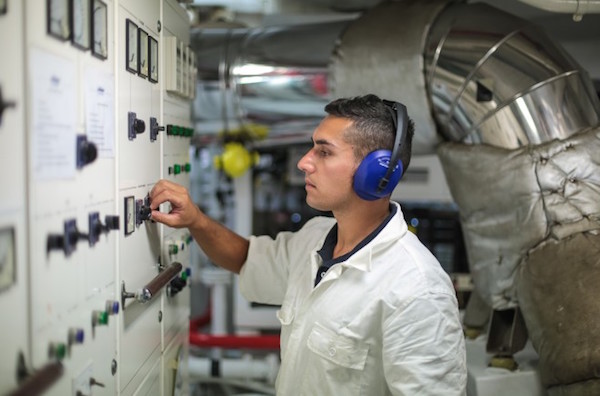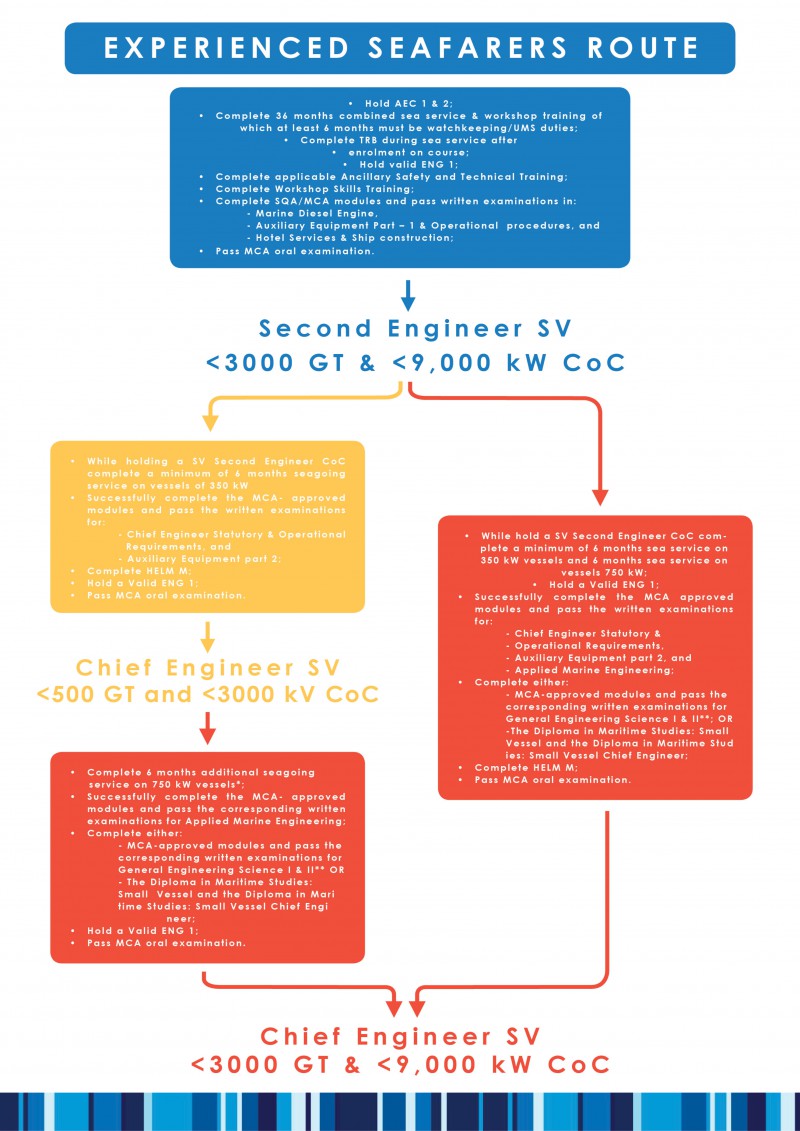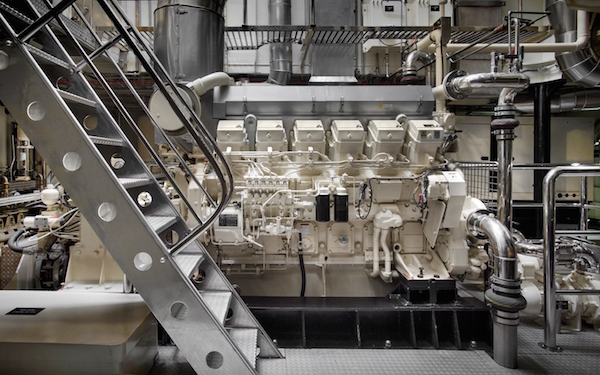MIN 524: the new engineering structure
Following the announcement of MIN 524 – the new certification route for engineers on small vessels – we speak to Tim Moss about what the changes mean for yacht engineers.…
With the aim of creating Certificates of Competency (CoCs) that are interchangeable between sectors, more relevant to small vessel engineers and facilitate faster routes to promotion, the MCA recently released MIN 524 - a Marine Information Note detailing a new training and certification scheme for engineers of vessels under 3,000gt.
The revised scheme evolved from a working group that was formed of delegates from the main UK training providers, along with representatives from the MCA, the International Association of Maritime Institutes, fishing industry, tug industry, offshore support vessels, UK Border force, workboats association, serving yacht engineers and two major engineering institutes.
While change was needed, the standards and relevance of the new training syllabi were foremost on the working group’s agenda. Subsequently, sensible ‘grandfather clauses’ were introduced so that existing seafarers were not disadvantaged and new training regimes were deemed relevant, achievable and fair.
The current training and certification regime, with its current limitations and non-transferability, will run until 2021. The new routes will be ‘phased in’ as training providers are able. Tim Moss, part of the workgroup and head of engineering at Bluewater, expects that training providers are likely start with the new small vessel engineer ‘Experienced Seafarer’ route from July 2017, meaning the two schemes will run in parallel for some time. Transfers and conversions will be available very soon and the first ones are expected in autumn 2016.
MIN 524 provides a clear table that shows how engineers can transfer their current CoC to the new structure. “In general terms, for most, this only requires three months sea time in the current rank and the passing of an oral board to gain the benefits of the new certificate,” explains Moss. Engineers can access the MCA Notice of Eligibility application to transfer here.
New routes of training and promotion:
The new routes all start with the Approved Engine Course (AEC) and there will be no MEO (L) or stand-alone skills test for yachts. While not a CoC, the AEC will be the starting point for engineers. “It was agreed that the AEC needed to be bigger, better and mandatory to provide a logical stepping stone to the next level,” says Moss. “This and the lack of credibility of the ‘skills test’ was the catalyst for a review. The AEC will now be two weeks long and mandatory. Those who already hold AEC and have three months sea service while holding AEC will not have to do it again.”
A training record book (TRB) will be issued for all students starting from fresh to progress to the next qualification. The ancillary and safety courses, along with HELM requirements, are also detailed in the MIN but are very much the same as the present.
Second Engineer
There will be three new routes to what was Y4, now be called the Second Engineer certificate:
1. The Experienced Seafarer route – courses and exams estimated availability from July 2017
“The new Experienced Seafarer route will have some considerable reduced sea time requirements and will now include two weeks workshop time, which may be exempted with prior workshop experience in hand tools and fitting,” explains Moss. There will still be a requirement to undertake one week of preparation courses before sitting the SQA examinations in Marine Diesels, Auxiliary Equipment Part 1 and Operational Procedures and Basic Hotel Services.
2. Approved route – blended learning and courses estimated from early 2018
“In basic terms there will be a fast track route for those who study through an approved route of ‘education’ involving academic modules called Maritime Studies Qualifications (MSQs),” says Moss. ‘Successful completion will result in the award of a ‘Diploma in Maritime Studies Small Vessel Engineer’.”
It is suggested that this route, with a much reduced sea time requirement, will suit the superyacht engineer due to the sporadic use of yachts underway at sea for sea time accrual, and that some of this learning can be undertaken through blended learning packages on board, some online and in their own time.
There will still be a requirement to undertake one week preparation courses and then sit the SQA examinations in Marine Diesels, Auxiliary Equipment Part 1 and Operational Procedures and Basic Hotel Services – the course syllabi of which have been updated and modified.
Larger vessel subjects have been removed and Auxiliary Equipment has been split into two parts. Some of the Auxiliary subjects have been moved into Marine Diesels but the harder elements will be encountered at the higher level CoC, Chief Engineer 9000kW 500GT. The written and oral exams have also been modified to match the new syllabi requirements.
3. The Higher National Diploma or Higher National Certificate route
This route will require enrolment at a training college for those with an HNC or HND, or part thereof, where the candidates accredited prior learning units will be assessed on a case-by-case basis by the college to determine the qualifications required for the award of the CoC. They will still have to sit the three SQA examinations.
Chief Engineer 9000 Kw limited 500GT (Formerly Y3)
“This new CoC will replace the old Y3 and will now include a modified Chief Engineer Statutory Operational Requirements course, Auxiliary Equipment 2 and some other subjects taken from other areas to bolster up this qualification to a meaningful higher level internationally recognised qualification,” says Moss. “Transfer from Y3 to this new interchangeable qualification can be achieved by proof of sea time or an oral examination.”
Chief Engineer 9000 Kw limited 3000GT
“This CoC replaces Y2 and Y1,” concludes Moss. “There will be two routes available; either from Chief Engineer limited 500GT (as above) or fast track from Second Engineer through the ‘approved route’ with relevant sea time and additional education units resulting in the award of Diploma in Maritimes Studies Small Vessel Chief Engineer. Either way the candidate must successfully complete the MCA-approved modules and pass the corresponding written examinations.”
Benefits:
The clear positives of the new CoCs are that area limitations are removed for engineering on all small vessels, which allows interchangeability between sectors, and all the course syllabi has been refreshed to be more relevant to the small vessel sector.
Routes to progress to larger kW certificates are now in place and there is an even faster route for those engineers taking the MSQ route and award of Diploma in Maritime Studies. The blended learning abilities mean less classroom time – a particular benefit to those working in the superyacht industry. The addition of the training record book, required from AEC to Second Engineer and subsequent promotions, will log experience and can also validate sea service.
For superyacht engineers the reduction in sea time will be another big plus. The number of days underway at sea is now representative of 1.5 days sea service. Therefore, what in the past was a nine-month qualifying period, would become just a six-month qualifying period. Up to 25 per cent of the sea service requirement may now also include time in port, at anchor or in the yard.
Recommendations:
It should be noted that engineers can stay as they are for as long as they like, what matters is whether they are in a position to transfer to the new system or they are starting out afresh. “I would advise students in the short term to continue with their current training for their next CoC without delay and then transfer to the new system,” recommends Moss.
“AEC is going to get harder, and so is limited Chief (formerly Y3), as this will now include Auxiliary Equipment 2 (unless the old Y4 Auxiliary is passed). It should be noted that you can't do parts of one route and parts of the other mid-stream for the same CoC and thus plot an easier course for the crafty yacht engineer.”
Moss adds that there will of course come a time where it will be quicker for students to embark on the new training route with the less sea time requirement and the new syllabus exams. This will depend on the individual and his or her circumstances.
For those looking into the new system, Moss advises that the PYA is a good source of advice and with the MCA’s paperwork process. Individual enquiries should be addressed to the MCA for the official response, as training providers can only advise. Moss would also like to remind readers that they should always check with the MCA for their Letter of Initial Assessment, which will state where the engineers currently stand – training providers do not have the necessary information or authority to do this.
This news is a major milestone for the engineering sector, and hopes to improve training and certification standards across the board. In further good news, the MCA are allegedly currently looking at mirroring a similar system on the deck side in the future.
Profile links
MCA - Maritime and Coastguard Agency / Ensign
Click here to become part of The Superyacht Group community, and join us in our mission to make this industry accessible to all, and prosperous for the long-term. We are offering access to the superyacht industry’s most comprehensive and longstanding archive of business-critical information, as well as a comprehensive, real-time superyacht fleet database, for just £10 per month, because we are One Industry with One Mission. Sign up here.






